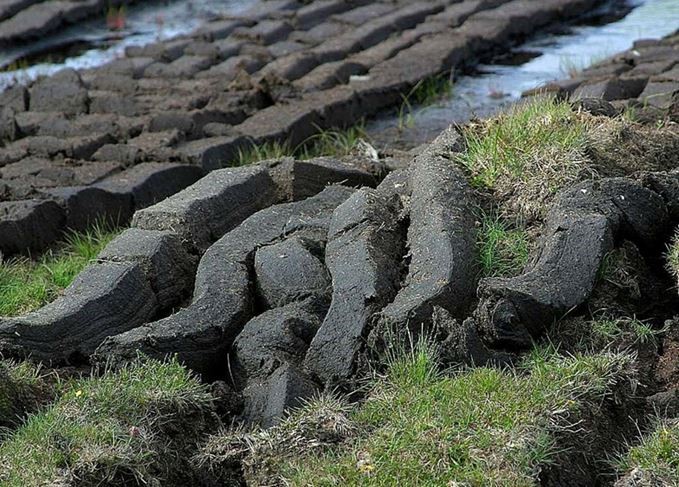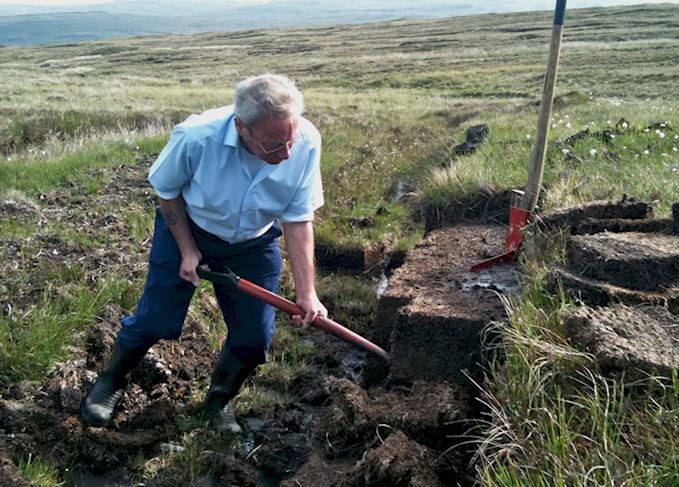Peat, Love or Hate It, Is Here To Stay
The Encyclopedia Britannica defines peat as “fuel consisting of spongy material formed by the partial decomposition of organic matter, primarily plant material, in bogs, fens, and moors.” Peated whisky is a much misunderstood and feared type of Scottish whisky, but I will try to make it seem less like a dram that an old bearded Scotsman complaining about the world would enjoy and more a dram that is as multifaceted and expansive as any other whisky out there.
The first dram that I enjoyed was a no-holds-barred, peated monster from Islay and it blew me away – the aromas of smoke, tobacco, wood fire and salt all combined to make it an unforgettable experience. However, not everyone’s first impression of a peated whisky from Islay is like this – often people find it harsh, unpalatable and just too strong. The question we need to ask is what gives whisky from Islay and other regions in Scotland this distinctive and almost in your face ‘Scottish’ characteristic?

A peat bank on Islay
What gives the whisky this flavor is peat. For a long time, peat was used as a source of fuel in Scotland and was readily available for the distillers as a cheap, low cost form of providing heat for the malting stage in distilling. What they would do is burn blocks of peat under the barley and this in essence would create a smoke infused barley, a characteristic that would be carried right throughout the distillation process. This is still done to this day in the malting plants that supply many distilleries in Scotland.
Often when people try peated whisky for the first time, it is from the big, well known distillers on Islay and these whiskies are often akin to hiding in a bothy, storm coming in, peat fire billowing and an acrid smoke filling the room. This can be something people struggle with. However, there are other peated whiskies throughout Scotland that have different characteristics. The whiskies from Skye, for example, have an almost brine like quality to them and, to quote a famous Skye distillery, a “taste of salt.”
Peated whisky has long been thought to be a style only done in Scotland. However, peat is found across the world, ranging from North America to Japan and beyond. All these countries and many in between are beginning to experiment with the use of peat in their whiskies. When trying whiskies from these regions, I find that if the peat has been sourced locally to the distilleries, it can produce a very different style of smoke. The trick is finding what style of peat you prefer and going from there. These ‘world’ whiskies often use peat as a way of giving people access to what used to be a Scottish dominated area. When you are trying these whiskies, it is important to remember that they are often very young and feisty. This is primarily due to the conditions under which they have been matured.
As an avid smoke head and peat lover what I would recommend is starting easy – don’t go for the big full on malts, but instead try the softer, easier going ones. Also, consider the addition of water if it is cask strength, and you will begin to appreciate the world of peated whiskies and smoke. However, if the notion of sipping on a dram of smoky, earthy, peaty goodness is difficult to swallow, how about drinking it on a cold day when some fire is needed in the soul? At the end of the day, the main characteristic of the best peaty whiskies is that when you try them for the first time, or the hundredth, they still taste as full on and unashamedly smoky as ever.
What to remember when you are faced with a smoky peaty dram sitting in your glass is to take some time, sit back and enjoy a style of whisky that is rooted in Scottish heritage and tradition. It will also evoke thoughts of sitting by a roaring fire, breathing in these notes of wood smoke, your eyes stinging, mouth-watering, but also feeling that contented glow deep down, knowing you are drinking something truly unique while the harsh Scottish winter rattles your door and you need something to truly lift your spirits and put fire back in your soul.
Often when people try peated whisky for the first time, it is from the big, well known distillers on Islay and these whiskies are often akin to hiding in a bothy, storm coming in, peat fire billowing and an acrid smoke filling the room. This can be something people struggle with. However, there are other peated whiskies throughout Scotland that have different characteristics. The whiskies from Skye, for example, have an almost brine like quality to them and, to quote a famous Skye distillery, a “taste of salt.”
How Does Peat Make Whisky Taste...Peaty?
Peat has got The Whisky Virgins all fired up as they endeavor to understand where this magical substance comes from, and how it conjures myriad flavors in whisky. Follow as a whisky newbie goes digging for answers…

Burning question?
What is peat comprised of?
How does it affect the taste of whisky?
If there’s one thing I’ve learned on my journey through the whisky-verse it’s that Scotch can taste like basically anything. But seriously, someone could’ve warned me that there are drams out there that honk like burning hospitals.
During a visit to my local whisky dealer I took a recommendation and ran naively into my first sip of Laphroaig – a punchy little number called ‘quarter cask’, to be precise. I’d been skeptical of the whisky sub-genre known as ‘heavily peated malts’. Like a lot of whisky virgins I’d felt intimidated by those bad-lads of the back bar rumored to taste like iodine and tar. Probs because they have a rep of being the niche-est, most challenging of Scotches, suitable only for veteran drinkers and the incurably Scottish. Had sniffed a little smokiness in whiskies here and there but this was something else. It was oily and intense. It smelled like engines, and antiseptic, and cake.
But then I’d also heard that peated malts have die-hard fans who trot the globe looking for ever more intense hits of smoky goodness. Anything that inspires that kind of following has to be worth exploring, right?
I left my first Laphroaig encounter reeking like a disinfected arsonist and chock full of questions, chief among them being: ‘What is peat anyway, and how in the name of all that is good and malty does it make whisky taste like that?’

Smoky soil:
Peat is organic matter that has decomposed over thousands of years
It took a bit of asking around but I learned that peat is soil-type stuff cut from boggy ground that’s traditionally dried and burned as fuel in places too broke to even have trees. As a cash-strapped millennial, I’m intrigued by the possibility of saving on utility bills by burning dirt, so I keep digging… so to speak.
It turns out smoldering peat can be used to dry out the malt used to make Scotch whisky. This apparently gets it ready to be ground up and turned to beer ready for a ride in the still, but also brings crazy flavors to the party that you don’t get any other way. It was patiently explained to me by the regulars at my local whisky shack that if there’s smoky flavor in Scotch, it’s almost always coming from this here process.
Mate, I never would’ve guessed that a little campfire smell or a whiff of bacon in my whisky got there thanks to old-timey bog fire. I just figured it had something to do with them having smoky water up in Scotland, or using really hot stills to make the spirit, or maybe me not cleaning my glasses properly before a tasting session. But no, the word is it all comes down to smoking that barley. After my first taste of heavy peat I kind of understood why people go so nuts for this stuff. I figure it’s like spicy food, or deep house music, or Glasgow: kind of intense to start with, but super fun once you get into it. I see why Islay pronunciation defiers Bruichladdich make a range of ultra-peated malts at 309ppm called Octomore to provide fresh thrills for burned-out peat heads. I absolutely get why whisky slingers from Goa to Tokyo are churning out their own swampy malts to satisfy the peat chasers.
What I still don’t get though, is how peat can make one whisky taste like barbecue, and another smell like insurance fraud at the Elastoplast factory. Surely peat can’t do all that? I mean it’s basically just Scottish dirt at the end of the day, right? But no, there’s more to peat than meets the eye.

Bruichladdich’s Octomore 08.3 is billed as the worlds peatiest Whisky at 309 ppm
This miracle filth is formed specifically in peatland areas when organic matter breaks down and compresses itself into the earth over thousands of years. That means the stuff from up a hill in the Highlands might be made of grass and heather and lost hikers and stuff, but the same gear from an island like Islay – where they make a lot of smoky whisky – will have seaweed and ocean-y minerals in it. So, different peat – used in different amounts – can create a whole lot of different flavors in whisky.
Okay it still sounds a bit weird on paper. But don’t worry if the idea of drinking something that tastes like burning grass or ancient kelp sounds a little challenging, because about 90% of all Scotch is totally un-peated. You can just skip it if the idea really freaks you out. But it turns out that peaty whisky comes in different levels of intensity, just like the sauces they have at many different restaurants and on your super market shelfs. You don’t need to jump right into something that tastes like TCP and tarmac. Start off with a little medium Peri-Peri and work your way up to the XX hot sauce later on if you fancy.
